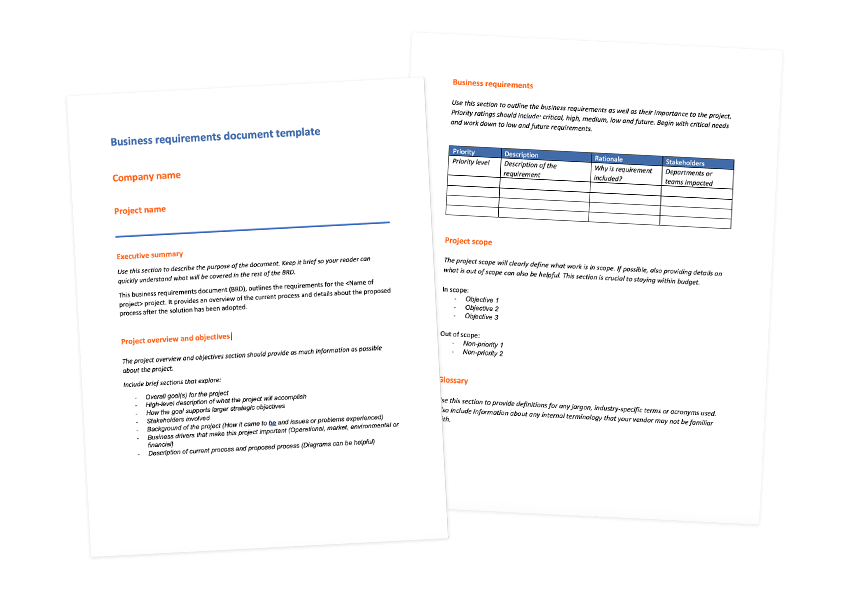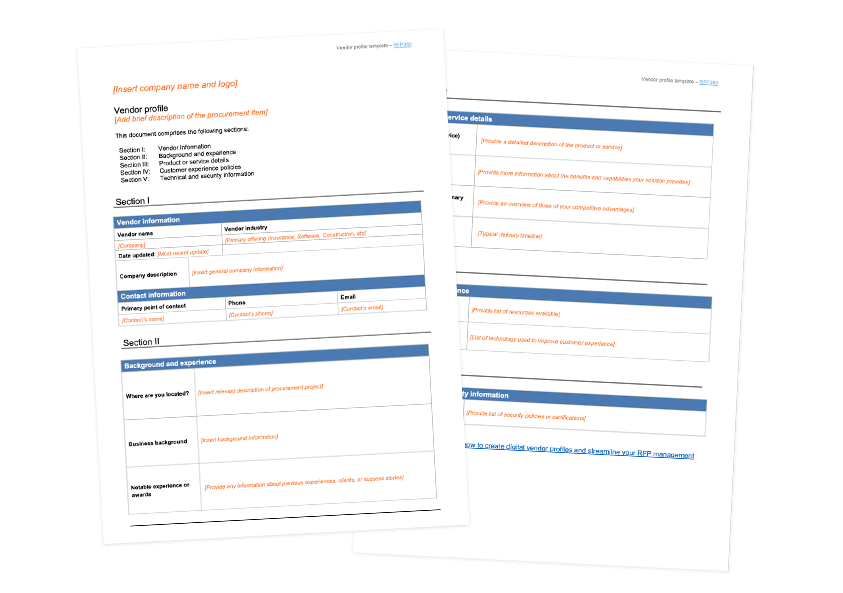When you’re ready to begin a sourcing project, the last thing you want to do is waste time. For many procurement teams, consistently finding and using the right checklists, templates and scorecards is a challenge. Consequently, procurement professionals must search through folders, emails and drives instead of spending time doing more valuable work. Fortunately, there’s a simple solution that keeps everything you need in one place — the RFP toolkit.
In this blog, we’ll give you everything you need to build your own complete RFP toolkit. Before we begin, we’ll walk through the definition and benefits of this approach. Next, we’ll explore each document, template and tool that you might want to add to your RFP toolkit. In addition, we’ll share a template or example as well as tips for making the most of the tool. Finally, we’ll conclude with a quick list of RFP toolkit best practices.
- What is an RFP toolkit?
- Inside the RFP toolkit
- 3 key RFP toolkit best practices
What is an RFP toolkit?
A request for proposal (RFP) toolkit is an informal term that refers to the collection of documents and strategies an organization uses to manage and execute a sourcing request. The tools in the RFP kit vary from one organization to another based on the processes and policies they must follow.
Why create a centralized toolkit?
We all know that sourcing and procurement can be chaotic. When you can’t locate a key document, you end up wasting time looking for it or worse yet, omitting it all together.
Collecting all of the resources required for issuing an RFP, from beginning to end, in a single location helps to improve the consistency of your RFP process. From beginning to end, each document moves the RFP process forward and ensures best practices are followed.
To explore the RFP process in more detail, check out this ebook: The RFP process guide.
Inside the RFP toolkit
As mentioned above, your RFP toolkit should be customized to meet the needs of your organization and your process. While you might not use all of these RFP tools for every project, it is helpful to be familiar with them and have them available.
Pre-RFP documents
Before you issue an RFP, you’ll need to interview stakeholders, gather requirements and define the project goals. Next, you must evaluate the market and select which suppliers should receive your RFP.
Business requirements document (BRD)
Gathering stakeholder requirements is the first step in the proposal process. To begin, you may gather data from several sources regarding product requirements, project goals, solution scope, evaluation criteria and more. Admittedly, it’s a flood of data.

Luckily, the business requirements document (BRD) helps to centralize, organize and formalize the project requirements. Look for a template that covers all the important sections of a BRD including an executive summary, project overview and objectives, business requirements, project scope and glossary.
Download the BRD template in Word to add to your RFP toolkit.
Request for information (RFI)
After you’ve defined the problem you’re solving and the project goals in the BRD, it’s time to explore the market. Rather than sending countless emails to the inboxes of sales people, consider issuing a request for information (RFI).
The RFI is a planning document that enables you to get vendor feedback on the challenge you’re facing. This process can validate your plan, bring unknown solutions to light and uncover important considerations. In addition, the RFI helps to reduce the field of vendors that will ultimately receive your RFP.
Add this vendor template to your RFP toolkit to make market research easier.
Vendor profiles
If you deal with a lot of vendor inquiries or manage similar recurring RFPs, managing vendor information through email quickly gets messy. Between searching your email for vendor introductions and looking for updates from existing vendors, the process is often inefficient.

Fortunately, vendor profiles offer an easy way to gather standard vendor information. The profile gathers information about a supplier’s background, capabilities, differentiators and details of their product or service offering. Use this template to create a centralized vendor catalog.
Download the vendor profile template now to streamline vendor onboarding and updates.
RFP creation and administration documents
The next step of the process is creating, issuing and managing the RFP itself. Start with an RFP template then add any required pricing tables. Once you’ve drafted and sent the RFP, gather any follow-up questions from vendors and provide responses in a vendor question and answer update.
RFP template
Templates provide a quick and easy way to get a head start on a new request. Indeed, there are dozens of specialized RFP templates available online. In addition, your prospective vendors may also be able to provide a template for you to use. No matter where you get your time-saving template, don’t forget to customize and follow best practices.
Start with this easy-to-use RFP template.
RFP invitation email to vendors
Even veteran procurement professionals get writer’s block when staring at a blank screen. Use this guide to write consistent, clear and concise invitation emails that intrigue and engage potential vendors.
Review the guide to writing an RFP invitation email to vendors
Pricing table
As you build your RFP, it’s important to consider how a vendor will provide key information. For most procurement teams, the actual bid, or price, is one of the most important considerations.
To ensure your team can easily compare each vendors’ offering, it’s wise to create and provide a pricing table. Ideally, your pricing table should establish how you want to evaluate bids including the units of measure for any products or services (price per hour, cost per user, monthly charge and so on).
Use this pricing table template from the City of Lakewood to guide project bids.
Proposal evaluation tools
When the submission deadline passes, the next phase of the RFP process begins — evaluation. Gather the proposals and use these documents to score and compare them. Then, select your winner.
RFP scoring guide
If you’re part of a large organization that regularly engages stakeholders to score and evaluate proposals, consider an RFP scoring guide. The guide offers a crash course in the RFP process and provides project background information. Essentially, it defines key terms, establishes procedure and ensures everyone has the necessary context and guidelines to contribute effectively.
Download and customize this RFP scoring guide from the Department of Education.
Proposal evaluation rubric
Typically RFP scoring goes from one (representing an answer that is noncompliant) up to five (indicating the ideal response). However, when it comes to evaluating complex responses common in strategic sourcing, scoring is often inconsistent as interpretation varies from one evaluator to another. In this case, a scoring rubric provides helpful guidance.
The rubric provides narrative sample answers to illustrate the responses for each of the possible scores.
This RFP scoring rubric from Kansas State University is a great example to use.
RFP scorecard
Now that your scorers and evaluators are all on the same page, it’s time to dig into the proposals. An RFP scorecard is the document where scores are recorded and compared.
Depending on your needs, you may take one of many approaches to RFP scoring. However, one of the most popular strategies is using a weighted scoring template to prioritize different decision factors.
Add this Department of Transportation weighted scoring template to your RFP toolkit.
Post-evaluation tools
Once you’ve picked the perfect vendor, it’s time for the last steps. Negotiations, vendor assessments and notification letters.
Vendor risk assessment
Before you execute a contract with any given vendor, it’s important to vet them to ensure they won’t introduce risk into your organization. This means different things for different procurement projects. For example, you may need to evaluate data security for a software RFP, financial stability for an insurance RFP or ownership details for an investment management RFP.
Check out this interactive vendor risk assessment from SafetyCulture.
RFP notification letters
Now that you’ve gone through the selection process, it’s time to notify the participants. For the successful vendor you’ll need to send an RFP award letter. On the other hand, issue a proposal rejection letter to let unsuccessful vendors down easy. These are quick, one-page letters, but a template is still helpful.
Download these notification letters to get started.
3 key RFP toolkit best practices
1. Move your toolkit to the cloud
One of the key benefits to using an RFP toolkit is the ability to centralize and improve consistency. Moving your kit to the cloud using RFP management software enables users throughout your organization to access it from anywhere.
2. Formalize your process
An RFP toolkit works best alongside a well-established RFP process. Indeed, avoiding rogue processes and encouraging all toolkit users to work from the same templates and documents unifies RFP data. Ensure that your process aligns with any formalized procurement policies.
3. Customize everything
No two procurement projects are exactly alike. Similarly, each of these RFP toolkit documents should be tailored to fit your needs. Highlight or make note of areas to be edited so they are easy to spot before you send out or use the document. Be sure to always follow RFP template best practices.
One tool to rule them all – RFP software
We all know that a lot of work goes into creating and managing an RFP. While you can centralize your RFP toolkit using any cloud storage solution or centralized drive, RFP software takes you to the next level. Indeed, RFP management software is an all-in-one solution for issuing RFPs. The platform administers, centralizes, automates or manages every aspect of the RFP process, from start to finish.
Explore how RFP software delivers value and efficiency to any request management project:
- RFx development and administration
- Workflow and collaboration
- Dashboards and reporting
- Evaluation and scoring



